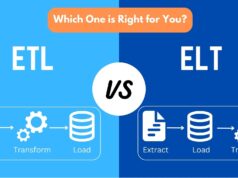Modern ways of doing business is all about following the modern and common strategies that exist to give you better overall results and allow your company to grow. If you are not doing the most, you will eventually start to fall behind and the competition will surely overtake you. Naturally, you wish to prevent this at all costs so you explore and do research on the best types of strategies out there that can bring new solutions your way and give you more income in the process.
One of the most widely spread and therefore familiar terms in business is GRC. It is a dominant strategy for any company that wants to focus more on reaching their goals and realizing the potential they know they have in their team. First time hearing about it?
Well, you are hardly alone in that especially if your company is young. Worry not though as we will try our best to help you right here and now. In this article you will learn what GRC strategy is, what it means, and why you need it. To find out more about it make sure to check out insights.diligent.com.
What does it Mean?

As you might have guessed already, GRC is an acronym, a string of capital letters where each letter stands for a specific word. G is for governance, R is for risk, and C is compliance. These three are the main focus of the whole strategy and the ultimate goal is establishing a method which can ensure that everyone in the team has the right information and means at the right time to achieve results with the actions they take.
Back in the day, this strategy used to be known as OCEG, or Open Compliance and Ethics Group. This was a nonprofit organization who came up with GRC in order to better define their efforts. Let us take a closer look at what each of the three aspects implies. First off, the governance part revolves around the policies that guarantee that the activities of the company are in line with their objectives.
This feature helps with the responsibilities and rights of the decision makers in an organization and tries to make everything more seamless and smooth. Some of the things governance takes care of include corporate management and the management of policies and strategies.
The risk part evaluates the potential damage and the probability of it even happening, and it exists in every business at very different levels. Not all business have the same risk so this part of the overall strategy can be almost unrecognizable between industries and markets.
Somewhere, the health and safety risks are the most important while other companies for example put more emphasis on customer data and their reputation. The practices in risk evaluation consist of things like threat evaluation and addressing, general well-being of the company, and sets of processes that identify the risks.
Last but not least, the compliance aspect of GRC deals with the practices of structuring activities which helps the company stay in line with different regulations, laws, and guidelines in that particular industry. If the compliance part is done the right way, it makes things easier overall since it minimizes risks and helps with the governance aspects. If business do not comply, they face penalties in many ways as well as legal troubles with the governing bodies overlooking things.
Why do Businesses Need It?

From what was said above, we could conclude, for the time being, that the general framework comes down to the proper governance of the whole organization, an adequate and sufficient management of all potential risks, and complete and utter compliance to the necessary requirements that exist. In an ideal world, all business would easily follow this without problem, but we do not live in an ideal world. Despite this, you should definitely employ the help of GRC in your business if you want to become better across the board.
Whatever the type of work you are in, there are too many things to worry about and deal with on a daily basis. Therefore, you need help and there is hardly anything that can help you as much across the board as a good GRC strategy. If you manage to use it properly, not only will you reduce the costs you have but also boost the efficiency and productivity of your employees. Their morale will skyrocket, there will be less paperwork to deal with, and the happiness and satisfaction with the workplace will reach an all-time high.
This tends to rub off on the customers as well as a good and healthy workplace often has a good relationship with the client base, and a good reputation. All in all, you will finally be managing everything as you should and the company will be doing the most in terms of production, protecting the staff and the equipment, satisfying the stakeholders, and staying true to the legal matters and laws. As an owner or a manager, you will gain the ability to access more information and data quicker and more efficiently, as well as to repeat what works best consistently.
Involving Everyone

Before we end, we have to mention one more crucial aspect of the whole GRC strategy. The reason it works so well is because everyone is on board and doing their part towards the same exact goal. It starts from the CEO and the board who provide the oversight but it goes down through managers and team leaders to the entry level positions.
Governance comes on many levels, there are different types of risks in every company, and usually there are separate laws and guidelines in different sections, floors, and offices. Such a large-scale operation cannot be performed by a few individuals on important positions, is has to become the culture of the whole business. And that is exactly why it works.
Collaboration and communication between all of the different teams throughout the company is key and once you have your GRC strategy in place, make sure to inform everyone, from the owner to the cleaning team. Only then will you truly be doing the most.















